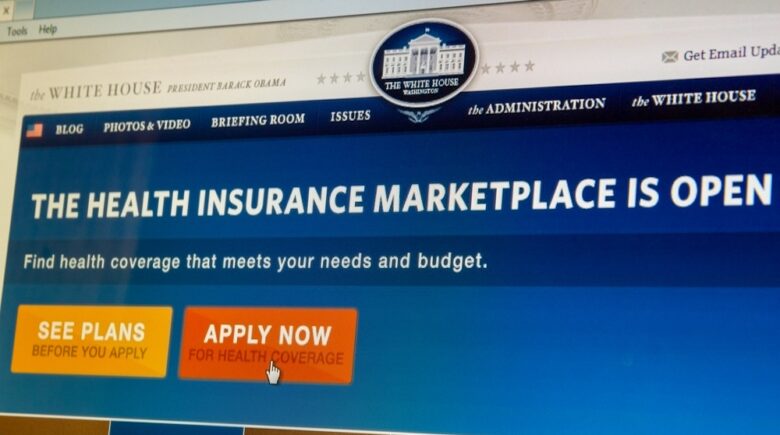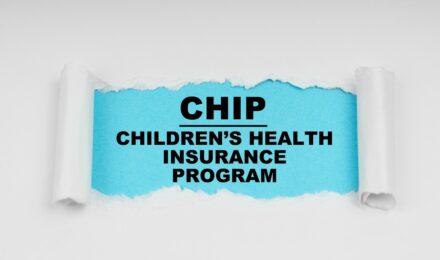Contents
The Affordable Care Act (ACA) Marketplace offers affordable health insurance options to individuals, families, and small businesses. However, navigating the complex system can be daunting, and identifying hidden savings opportunities requires careful consideration.
The ACA can be confusing for several reasons. After all, it is a comprehensive and intricate law, comprising over 900 pages. Its numerous provisions, amendments, and regulatory updates make it challenging to understand.
Healthcare terminology, insurance lingo, and government acronyms (e.g., HHS, CMS, FPL) can also bewilder consumers. And determining eligibility for subsidies, Medicaid, or Children’s Health Insurance Program (CHIP) involves complex income and family size calculations.
Likewise, the enrollment process, including application, verification, and plan selection, can be cumbersome. Legislative changes, court decisions, and administrative actions have altered the ACA’s landscape, creating uncertainty. And misinformation, conflicting media reports, and varying advice from brokers or navigators contribute to confusion.
In this article we will seek to alleviate some of this confusion and help make navigating the world of the Affordable Care Act all the more manageable.
Understanding the Levels
ACA Marketplace plans come in five metal levels: Bronze, Silver, Gold, Platinum, and Catastrophic. Bronze plans have the lowest premiums but highest deductibles, while Platinum plans have the highest premiums but lowest deductibles. Silver plans are the most popular, offering a balance between premium costs and out-of-pocket expenses.
Premium Tax Credits
Premium tax credits are a vital component of the Affordable Care Act, helping eligible individuals and families afford health insurance by reducing the cost of premiums for qualified health plans purchased through the ACA Marketplace.
To qualify for premium tax credits, individuals and families must meet specific criteria, including having a household income between 100% and 400% of the federal poverty level, enrolling in a qualified health plan, and not being eligible for affordable employer-sponsored insurance. Additionally, they must be U.S. citizens or lawfully present immigrants and file taxes jointly if married. [1]
The premium tax credit process involves estimating income and household size when applying for coverage, receiving an advance payment to lower monthly premiums, and reconciling this payment with actual income when filing taxes. The amount of the premium tax credit depends on various factors, including household income, family size, age, geographic location, and plan selection. This calculation determines the credit amount, which can significantly lower premium costs.
Premium tax credits offer numerous benefits, including increased affordability of health insurance and encouragement of enrollment in comprehensive coverage. For instance, an individual with a $30,000 income may receive a $200 monthly premium tax credit, while a family of four with a $60,000 income may receive a $500 monthly premium tax credit.
Cost-Sharing Reductions
Cost-sharing reductions (CSRs) are a key provision of the ACA, designed to lower out-of-pocket healthcare expenses for eligible individuals and families. CSRs are available to those who enroll in Silver-level plans through the ACA Marketplace. [2]
CSRs reduce deductibles, copayments, and coinsurance for qualified enrollees, making healthcare more affordable. These reductions are applied to the plan’s cost-sharing requirements, resulting in lower out-of-pocket expenses. To qualify for CSRs, individuals and families must meet specific income guidelines, ranging from 100% to 250% of the federal poverty level. Additionally, they must enroll in a Silver plan, which offers a balance between premium costs and out-of-pocket expenses.
The ACA requires insurers to offer CSR plans with reduced cost-sharing. Insurers must provide: plans with lower deductibles, lower copayments for doctor visits and prescription medications, and reduced coinsurance for hospital stays.
CSRs are automatically applied to Silver plans for eligible enrollees. No additional application or paperwork is required. For example, an individual with a $25,000 income may enroll in a Silver plan with a $1,000 deductible. With CSRs, the deductible might be reduced to $500, making healthcare more accessible.
CSRs have significantly improved healthcare affordability for millions of Americans. However, CSR availability and benefits may vary depending on income level, family size, and state-specific regulations.
Special Enrollment Periods
Special Enrollment Periods (SEPs) allow individuals and families to enroll in or change Affordable Care Act health insurance plans outside the annual Open Enrollment Period. SEPs provide flexibility for those experiencing significant life changes or qualifying events. [3]
To qualify for an SEP, individuals must experience a qualifying life event, such as:
- Getting married or divorced
- Having a child or adopting
- Losing existing health coverage due to job loss, divorce, or other reasons
- Moving to a new state or ZIP code
- Gaining citizenship or lawfully present immigration status
- Being released from prison or jail
SEPs typically last 60 days from the date of the qualifying event. SEPs ensure continuous health insurance coverage for individuals experiencing significant life changes. Understanding SEP eligibility and requirements enables individuals to maintain comprehensive coverage and avoid potential penalties or gaps in coverage.
Family Glitch Fix
The Family Glitch Fix, implemented in 2022, addresses a longstanding issue in the Affordable Care Act. Previously, the ACA considered affordability of employer-sponsored insurance (ESI) only for the employee, not their family members. This led to the “family glitch,” where families were ineligible for premium tax credits due to the employee’s affordable ESI, even if family coverage was unaffordable.
The fix revises the affordability test to consider the entire family’s ESI costs, not just the employee’s. This change enables families to access premium tax credits and enroll in Marketplace plans if employer-sponsored family coverage exceeds 9.12% of household income; or family members are ineligible for affordable ESI.
The Family Glitch Fix expands access to affordable health insurance for millions of Americans, particularly low- and middle-income families. This change aims to increase healthcare accessibility and affordability for families previously affected by the glitch.
Conclusion
By understanding these factors and exploring available resources, enrollees can uncover hidden savings opportunities within the ACA Marketplace. Careful navigation and informed decision-making empower individuals and families to secure affordable, comprehensive health insurance coverage.
Sources
- The Premium Tax Credit – The basics | Internal Revenue Service (irs.gov)
- What is a cost-sharing reduction? | healthinsurance.org
- Special Enrollment Period (SEP) – Glossary | HealthCare.gov
Contents
The Affordable Care Act (ACA) Marketplace offers affordable health insurance options to individuals, families, and small businesses. However, navigating the complex system can be daunting, and identifying hidden savings opportunities requires careful consideration.
The ACA can be confusing for several reasons. After all, it is a comprehensive and intricate law, comprising over 900 pages. Its numerous provisions, amendments, and regulatory updates make it challenging to understand.
Healthcare terminology, insurance lingo, and government acronyms (e.g., HHS, CMS, FPL) can also bewilder consumers. And determining eligibility for subsidies, Medicaid, or Children’s Health Insurance Program (CHIP) involves complex income and family size calculations.
Likewise, the enrollment process, including application, verification, and plan selection, can be cumbersome. Legislative changes, court decisions, and administrative actions have altered the ACA’s landscape, creating uncertainty. And misinformation, conflicting media reports, and varying advice from brokers or navigators contribute to confusion.
In this article we will seek to alleviate some of this confusion and help make navigating the world of the Affordable Care Act all the more manageable.
Understanding the Levels
ACA Marketplace plans come in five metal levels: Bronze, Silver, Gold, Platinum, and Catastrophic. Bronze plans have the lowest premiums but highest deductibles, while Platinum plans have the highest premiums but lowest deductibles. Silver plans are the most popular, offering a balance between premium costs and out-of-pocket expenses.
Premium Tax Credits
Premium tax credits are a vital component of the Affordable Care Act, helping eligible individuals and families afford health insurance by reducing the cost of premiums for qualified health plans purchased through the ACA Marketplace.
To qualify for premium tax credits, individuals and families must meet specific criteria, including having a household income between 100% and 400% of the federal poverty level, enrolling in a qualified health plan, and not being eligible for affordable employer-sponsored insurance. Additionally, they must be U.S. citizens or lawfully present immigrants and file taxes jointly if married. [1]
The premium tax credit process involves estimating income and household size when applying for coverage, receiving an advance payment to lower monthly premiums, and reconciling this payment with actual income when filing taxes. The amount of the premium tax credit depends on various factors, including household income, family size, age, geographic location, and plan selection. This calculation determines the credit amount, which can significantly lower premium costs.
Premium tax credits offer numerous benefits, including increased affordability of health insurance and encouragement of enrollment in comprehensive coverage. For instance, an individual with a $30,000 income may receive a $200 monthly premium tax credit, while a family of four with a $60,000 income may receive a $500 monthly premium tax credit.
Cost-Sharing Reductions
Cost-sharing reductions (CSRs) are a key provision of the ACA, designed to lower out-of-pocket healthcare expenses for eligible individuals and families. CSRs are available to those who enroll in Silver-level plans through the ACA Marketplace. [2]
CSRs reduce deductibles, copayments, and coinsurance for qualified enrollees, making healthcare more affordable. These reductions are applied to the plan’s cost-sharing requirements, resulting in lower out-of-pocket expenses. To qualify for CSRs, individuals and families must meet specific income guidelines, ranging from 100% to 250% of the federal poverty level. Additionally, they must enroll in a Silver plan, which offers a balance between premium costs and out-of-pocket expenses.
The ACA requires insurers to offer CSR plans with reduced cost-sharing. Insurers must provide: plans with lower deductibles, lower copayments for doctor visits and prescription medications, and reduced coinsurance for hospital stays.
CSRs are automatically applied to Silver plans for eligible enrollees. No additional application or paperwork is required. For example, an individual with a $25,000 income may enroll in a Silver plan with a $1,000 deductible. With CSRs, the deductible might be reduced to $500, making healthcare more accessible.
CSRs have significantly improved healthcare affordability for millions of Americans. However, CSR availability and benefits may vary depending on income level, family size, and state-specific regulations.
Special Enrollment Periods
Special Enrollment Periods (SEPs) allow individuals and families to enroll in or change Affordable Care Act health insurance plans outside the annual Open Enrollment Period. SEPs provide flexibility for those experiencing significant life changes or qualifying events. [3]
To qualify for an SEP, individuals must experience a qualifying life event, such as:
- Getting married or divorced
- Having a child or adopting
- Losing existing health coverage due to job loss, divorce, or other reasons
- Moving to a new state or ZIP code
- Gaining citizenship or lawfully present immigration status
- Being released from prison or jail
SEPs typically last 60 days from the date of the qualifying event. SEPs ensure continuous health insurance coverage for individuals experiencing significant life changes. Understanding SEP eligibility and requirements enables individuals to maintain comprehensive coverage and avoid potential penalties or gaps in coverage.
Family Glitch Fix
The Family Glitch Fix, implemented in 2022, addresses a longstanding issue in the Affordable Care Act. Previously, the ACA considered affordability of employer-sponsored insurance (ESI) only for the employee, not their family members. This led to the “family glitch,” where families were ineligible for premium tax credits due to the employee’s affordable ESI, even if family coverage was unaffordable.
The fix revises the affordability test to consider the entire family’s ESI costs, not just the employee’s. This change enables families to access premium tax credits and enroll in Marketplace plans if employer-sponsored family coverage exceeds 9.12% of household income; or family members are ineligible for affordable ESI.
The Family Glitch Fix expands access to affordable health insurance for millions of Americans, particularly low- and middle-income families. This change aims to increase healthcare accessibility and affordability for families previously affected by the glitch.
Conclusion
By understanding these factors and exploring available resources, enrollees can uncover hidden savings opportunities within the ACA Marketplace. Careful navigation and informed decision-making empower individuals and families to secure affordable, comprehensive health insurance coverage.






